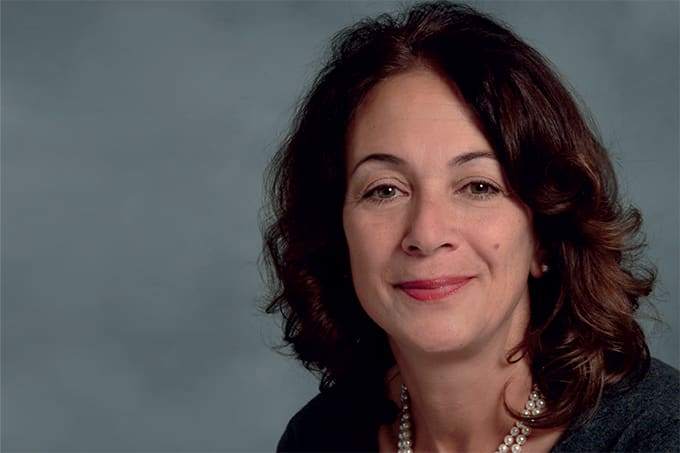
What led you to pursue pathology?
I wanted to specialize in internal medicine and really enjoyed endocrinology, so I followed that path – but then I switched to pathology, which gave me a unique perspective on both disciplines. When I told my department head that I was switching to pathology, he said, “You don’t look like a pathologist.” I asked, “What does a pathologist look like?” And he said, “An old man in a wrinkled suit, with stains on his tie, stuck in the basement with pickled body parts.” This description stayed with me and, when hiring professionals for my department at the University Health Network in Toronto, Canada, I looked for people who had strong personalities and weren’t afraid of social interaction. I pushed them to interact with the patients who regularly came to our offices to meet their pathologists.
Why are you passionate about digital pathology?
I believe that digital pathology results in better outcomes. In 1909, Canadian clinician William Osler said, “As is our pathology, so is our practice” – and that hasn’t changed. If you get the right diagnosis fast, the patient’s treatment is likely to work better, their hospital stay will be shorter, and they will have fewer complications. The secret is to persuade the decision-makers and budget-holders that the scanners, software, and AI systems we use all affect those variables. The world of digital pathology has grown; with so many technological advances available, we have to gather the data to prove that digital pathology saves money not only in the lab, but also outside it. It’s not easy, because the benefits can be hard to quantify without direct comparisons.
A great thing about digital pathology is that we can show patients their slides on our computer screens; on double-headed microscopes, they often only see their eyelashes. Digital images make it easier to explain to patients what we see in their slides, why they need a specific treatment, or that they may have a genetic disorder and need further testing.

How has pathology changed over the course of your career – and what changes will it see next?
I recently went to the Pathology Visions Conference in Las Vegas, where I saw 800 people deeply involved in digital pathology. Their energy was palpable. It was a far cry from the time I was told I would be sued for using digital pathology.
Many of us were told in training that pathology was a pattern recognition exercise and we were expected to offer a diagnosis based on that alone. These days, we need to understand not only pathophysiology, but also clinical manifestations – whether inherited or somatic – and help guide the right treatment for each patient. As a community, we must recognize the importance of the depth of our knowledge and the role we play – not only in identifying the pattern and the diagnosis, but also in understanding disease mechanisms and the biology of targeted therapies. Those are aspects that medical professionals may not be trained in or may not have time to explore in depth. Nobody can learn everything, and that’s why I advise my trainees to subspecialize, focus on their chosen area, and become an integral member of the clinical care team. We need to move away from just doing “pattern recognition,” or else algorithms will replace us.
There are two possible scenarios for digital pathology and AI. One is that pattern recognition algorithms do the job pathologists have trained them to do exceptionally well and, without adapting, pathologists disappear. It seems that many people are afraid of this scenario. But the more optimistic alternative is that we do our job better with the algorithms’ help. For me, digital pathology with AI is not just a challenge, but also a tremendous opportunity for advancement. Doing things differently ensures the survival – and the importance – of our discipline.
How can labs with limited resources go digital?
My current laboratory doesn’t have a lot of funds, so my team had to convince decision-makers that implementing digital pathology would save money in the longer term. It’s a hard calculation for those in charge of budgets, but for us, it’s quite intuitive. We see how much time is spent looking for slides that may have been misfiled when they need to be reviewed again; that goes away when the slides are available digitally. In an academic center with residents, the requests for slide recuts quickly add up; it’s much easier to share a digital file. Algorithms that accurately replace our most tedious manual tasks not only save valuable time and money, but also make our work more enjoyable and fulfilling.
Tell us about Digital Pathology Connections…
Understanding the equipment, evaluating software, integrating new algorithms, and figuring out the lab workflow is difficult and time-consuming, so why not seek out experienced professionals who have experience and have learned from their mistakes? A collaborative community reassures newcomers that they’re doing things right and allows everyone to share the challenges and frustrations that inevitably come with implementing new systems. Digital Pathology Connections is a group in which everyone can discuss issues, share solutions, and learn from one another. Originally, it was only open to pathologists, but we have realized that we can’t do this alone. We need collaborators, so now pathologists and anyone supporting them can join free of charge.
How do you balance a busy career and a personal life?
My children would tell you I don’t have a personal life! My husband is an endocrine oncologist, so we both see our work as our life. We love our jobs. When you love something, you live it. This is why my four kids grew up learning a lot about pathology and endocrinology. They have all grown up to be extremely well-adjusted, independent, and self-sufficient, and I’m now also a happy grandmother.




